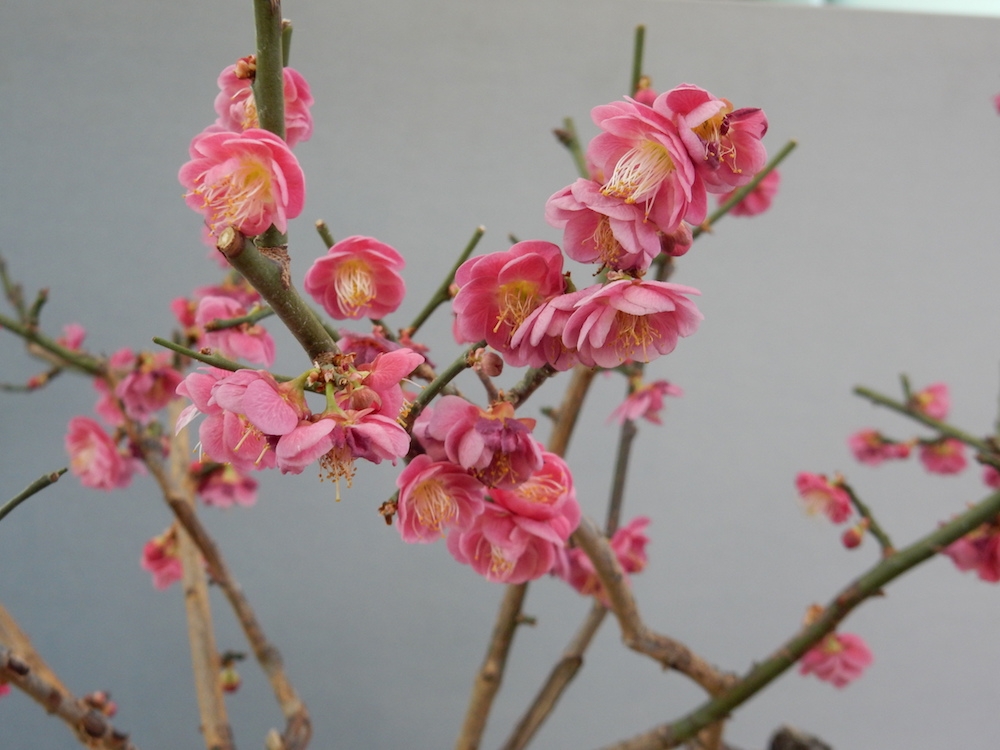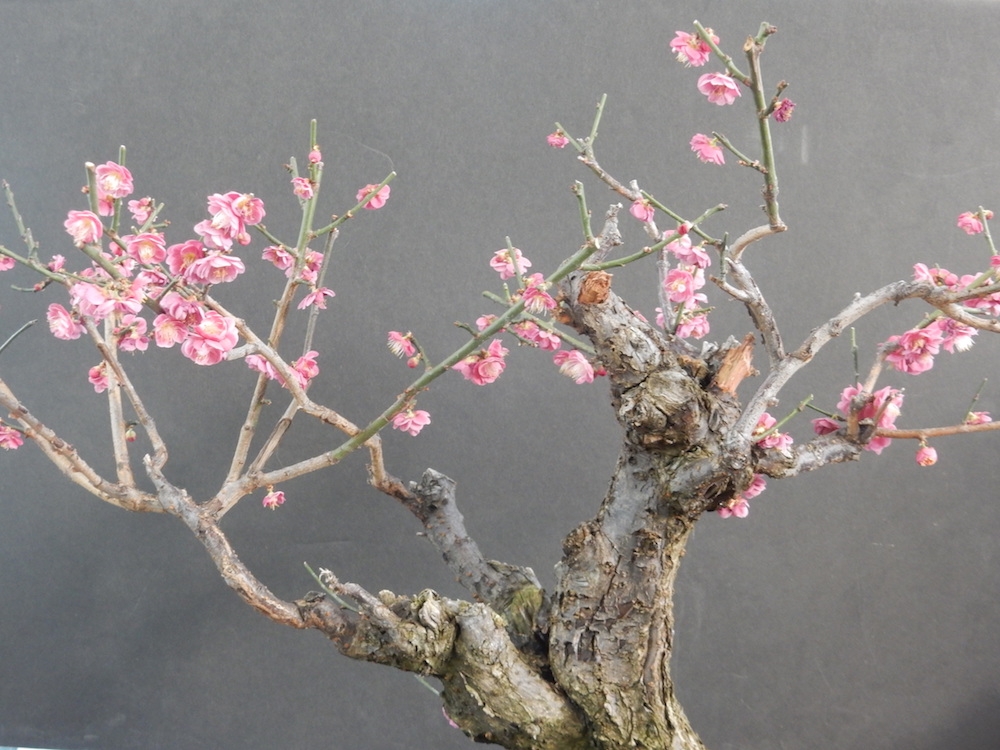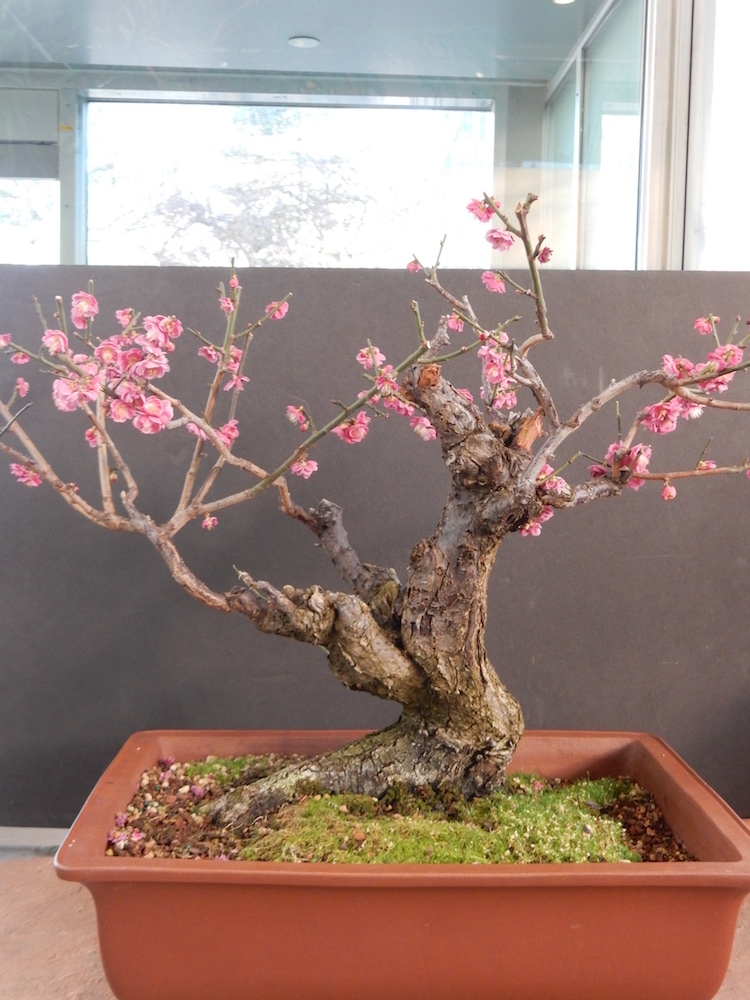梅Ume: Prunus mume in Japanese culture
A sentimental love affair between ancient Japanese intellectuals and Ume:
梅Ume (Japanese flowering plum), Prunus mume, has been one of the most popular winter-blooming trees in Japan for centuries. There are over 250 cultivars of both single or double blossoms with shades of white, pink and red.
Native to the Yangtze River region of China (in the mild climate), the fragrant Ume blossoms appear in early January to February while the snow still stays on the ground. It is a sign of the arrival of spring for Japanese people and a time to celebrate the beginning of the renewal of life as New Year.
Despite its popularity in Japan, Ume are relatively unknown to American gardens, which is opposite from their cousin 桜Sakura (Japanese flowering Yoshino cherry), Prunus × yedoensis, which have been widely available in U.S. since their introduction from Japan in 1902.
Both 梅Ume and 桜Sakura are in the rose family but there are the characteristic differences of the blossoms:
- Ume bloom in January to February, Sakura bloom in the mid to late March in Japan.
- Ume blossoms have petals with the rounded edges, Sakura’s petals have a jagged edge.
- A unique characteristic of Ume, sessile is the way the blossoms appear directly from the branches without peduncles (stalks) however, Sakura blossoms are attached by long peduncles, which gives a more dramatic display of their blossoms.
Unfortunately, I have never successfully grown Ume in Colorado gardens, as this winter-blooming tree does not like to be disrupted during its dormancy by the fluctuation of the temperature during wintertime in Colorado.
The good news is that Ume can be enjoyed in containers. In Japan, it is common to display the Ume bonsai showcasing their elegant winter blossoms for the New Year’s celebration. Denver Botanic Gardens Ume bonsai bloomed the last week of December and was displayed inside in Marnie's Pavilion at the Gardens. We'll let you know next December when it blooms again.
Another reason for Ume’s popularity is its fruit. In old times, it was a common practice for the Japanese household to pickle their homemade 梅干 (Umeboshi, salty and sour flavored pickled plum served with plain rice) which still are a staple of the Japanese household. Also, the fruits can be made into 梅酒 (Umesyu, sweet and fruity liquor). Because of this purpose, at least one Ume tree was planted in people’s backyards.
In early June, the gentle spring weather changes to the humid rainy season which continues to mid-July. For more than a month, it is the season that the small ‘ping-pong ball’ sized Ume fruits start ripening, called ‘梅雨Baiu’ means Ume rain, the transition from spring to summer.
Originally, Ume was believed to be brought from China to Japan in 飛鳥Asuka period (600AD), for the ornamental and medicinal purpose as people thought Ume’s magical power of detoxification and brings longevity.
However, the discovery of the Ume fruits in the tumulus of 弥生Yayoi period (400BC) proved that it was introduced along with the rice cultivation to Japan much earlier than originally people thought it was.
Japanese elites adored and treasured the lovely fragrant Ume blossom. They planted Ume trees all over their capitals (moved around for the centuries) as a symbol of sophistication and longing of the beautiful culture from China. Influenced by Chinese poets such as Du Hu and Li Bai from Tang dynasty, Ume was fashionable subject of the poetries.
菅原道真(Sugawara no michizane) a well-known scholar and statesman (845-903 AD) read an emotional farewell poem to his beloved Ume tree as he was relegated to the provincial post from the imperial court in the capital:
From Wikipedia:
‘東風吹かば にほひをこせよ 梅花
主なしとて 春を忘るな
kochi fukaba / nioi okose yo / ume no hana / aruji nashi tote / haru o wasuru na
When the east wind blows, flourish in full bloom, you, plum blossoms! Even though you lose your master, don't be oblivious to spring.
If Sakura appeals to the majority with their ‘in-your-face’ beauty, Ume requires sophisticated taste.
Alas, over the centuries, Ume became a part of our everyday life in Japan whether it was the flower or the fruits.
A funny twist is that the shape of Ume blossoms resembles the markings of cat’s paw on the ground in Japanese cartoons.
Japanese Flowering Plum Gallery



Comments
Home and Yards
i have made the attempt to grow ume as bonsai. i had one survive for over 5 years. they are beautiful flowers. and the pickled plums that are made from the fruit are delicious.
Add new comment